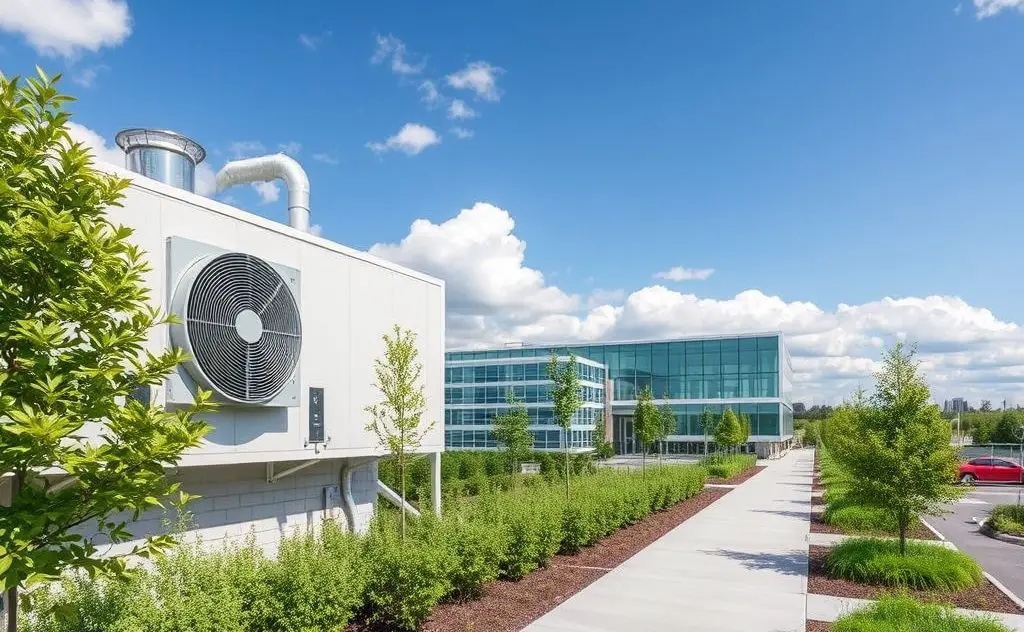Eco-friendly HVAC technology utilizes energy-efficient systems, renewable energy sources, and sustainable materials to reduce environmental impact and enhance indoor comfort.
As global energy demands rise, eco-friendly HVAC systems have become essential for reducing carbon footprints. These technologies offer efficient heating and cooling while minimizing environmental impact. This guide explores the latest innovations in sustainable HVAC solutions.

Key Eco-Friendly HVAC Technologies
Modern sustainable HVAC systems combine energy efficiency with smart technology. These solutions help buildings meet strict environmental standards while maintaining comfort.
Geothermal Heat Pumps
Geothermal systems use the earth’s stable underground temperature to heat and cool spaces. They can reduce energy use by 25-50% compared to conventional systems. These systems work well with horizontal water heater tank configurations for maximum efficiency.
Solar-Powered HVAC
Solar HVAC systems convert sunlight into thermal energy or electricity. Some models can store excess energy in batteries for nighttime use. The U.S. Department of Energy reports these systems can cut water heating bills by 50-80%.
Energy Recovery Ventilators (ERVs)
ERVs improve indoor air quality while conserving energy. They transfer heat and moisture between incoming and outgoing air streams. This technology works particularly well with built-in gas heater systems in commercial buildings.

Benefits of Green HVAC Systems
| Feature | Traditional HVAC | Eco-Friendly HVAC |
|---|---|---|
| Energy Efficiency | 50-70% | 90-98% |
| Annual Operating Cost | $1,500-$3,000 | $800-$1,500 |
| Lifespan | 10-15 years | 20-25 years |
Implementation Challenges
High Initial Costs
While sustainable HVAC systems save money long-term, upfront costs can be 20-40% higher than conventional systems. Government rebates and tax credits can help offset these expenses.
Retrofitting Limitations
Older buildings may need significant modifications to accommodate new systems. The ASHRAE provides guidelines for integrating modern HVAC into existing structures.
Technology Adoption
Many contractors and homeowners remain unfamiliar with green HVAC options. Education programs and demonstration projects help increase market acceptance.
Future Trends in Sustainable HVAC
- AI-powered predictive maintenance systems
- Phase-change materials for thermal storage
- Magnetic refrigeration technology
- Biomimetic designs inspired by nature
- Integrated renewable energy systems
As technology advances, eco-friendly HVAC systems will become more accessible and efficient. These innovations promise to transform how we heat and cool our buildings while protecting the environment.
